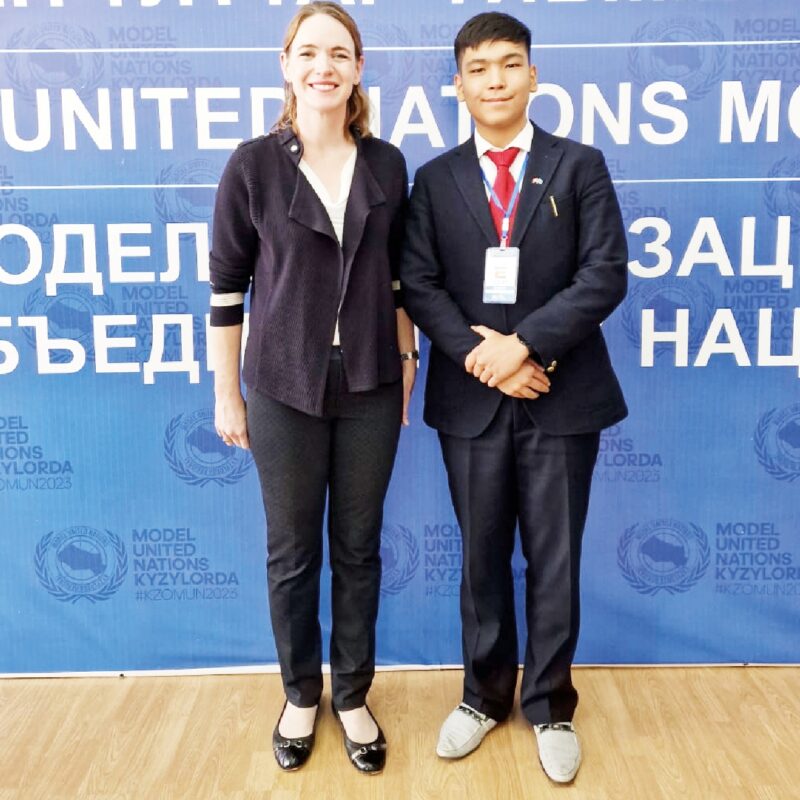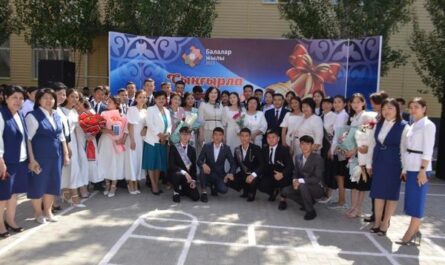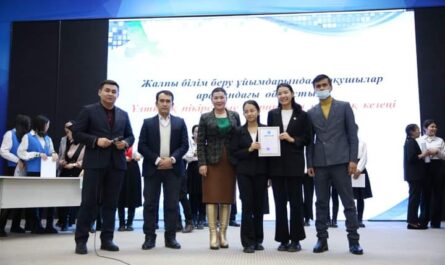It is widely said that the Kyzylorda region is called the cradle of Kazakh history. After all, it was in the Kyzylorda region that the first cities were founded that lay along the Syr Darya River. In addition, it was in these very ancient cities that the first constructs of the modern Kazakh world, such as fishing, agriculture and sewing, were founded, which later became important trade and transport hubs of the Silk Road.
I came to this conclusion thanks to the TET program (Tugan Elge Tagzym) or «Bow to the great motherland», whose main goal was to develop among young people a sense of duty, love and patriotism for their country, as well as an interest in the history of their native land. Nazarbayev Intellectual Schools first founded this program in 2012. As a result, ordinary students of 22 Nazarbayev Intellectual Schools have an incredible chance to visit the main cultural and historical sights of their native region. Fortunately, our school is no exception.
On the first day of our unforgettable trip, we visited the museum of the youth leader of Central Asia, Gani Muratbaev, then after that, we were able to enter the lands of the ancient city of Zhankent, which at one time was one of the centers of the Silk Road and the capital of the Oguzk Kaganate. On the second day, we visited the museum and mausoleum of Korkyt Ata. On the third day, our path already lay in the Syrdarya region, where we could see its cultural places. The fourth and last day of the trip was aimed at perhaps the most interesting region of our region, namely the Zhanakorgan region, where we had the opportunity to visit ancient cities like Chirik-Rabat and Syganak.
On the first day of my trip, when we visited Kazalinsk, I saw one old wooden house among many large houses. That building turned out to be the museum of Gani Muratbaev, which became the beginning of our tour. Initially, this museum, although it looked too small and old for a museum, however, as it turned out, it still kept a lot of information about the personal life of Gani Muratbaev and his works. It was thanks to this museum that I was convinced of the fact that the youth of our nation is very strong and even in such difficult times could lead entire departments of the Soviet Union. That day, I concluded that at that time there were no telephones, no Internet and no computers. Books were only in the library, and access to information was terribly limited. However, even despite this, ardent people like Gani Muratbaev did not despair and worked tirelessly in every way for the good of their people. These people make good times.
After the museum, our group visited the historical cities of the Kyzylorda region, or rather Chirik-Rabat, Syganak, Kyzylorda and Zhankent. It was at this moment that I realized that our region was the place where the capitals of four states were located. Without thinking twice, I was inspired by this idea and immediately after TET, I went to meet Tazhekeyev Azilkhan Auezkhanuly, historian, archaeologist, member of the Kazakh-German expedition to study the city of Zhankent, has a PhD doctorate and works at Korkyt Ata University. In fact, this person influenced me a lot, because it was he who fully understood my idea and always supported it. After doing a lot of research with him, we concluded that the Great Silk Road, due to its huge size, had several routes from China and Tibet towards Central Asia, forming its own “sections”. One of the sites, according to Azilkhan Tazhekeyev, was the Syrdarya direction. The paths that left Ferghana, which originates from Zhetysu, met with the Turkestan road, forming a single road that led to Zhankent and Syganak. As Azilkhan Tazhekeyev has already said, the Silk Road originated from east to west, from west to east, from south to north, from north to south, and it was Zhankent and Syganak that, by their geographical location, were in the very center of these trade routes, so the nomads or merchants could visit these cities for lodging and trade. In addition, after Zhankent, nomads or merchants could go along the flat road of Ustyurt in the Western Kazakhstan region or through the Kyzylkum desert to the lands of Khorezm and Turkmenistan. Therefore, Zhankent and Syganak were strategically important cities of the Syr Darya. Realizing the importance of these cities, Zhankent in the 10th-11th centuries was the capital and winter headquarters of the Oghuz state. Azilkhan Tazhekeev himself was in Zhankent for the first time in 2005 and since that time Zhankent has become an international archaeological center. Not only Kazakhs, but also scientists from Germany took part in the study of Zhankent. Syganak in the second half of the 15th and in the 16th century, the city was the center of the Kazakh Khanate, as well as Turkestan. Sygnak was its capital in 1469-1511 and 1521-1598. The Dzungars destroyed the city. Because of archaeological excavations, it was possible to find the remains of mosques, madrasahs, and mausoleums. Moreover, Syganak was also the capital and the winter headquarters of the White Horde. Chirik-Rabat was an ancient city of the Sako-Massaget tribes and was founded in the 14th century BC on a hill among the flat steppe. Studying the location of the city and the artifacts found, we came to the conclusion that although Chirik-Rabat was far from trading cities, the hill on which it was located was an excellent artificial fortress, and the walls that were built over the hill made Chirik-Rabat Rabat is an impregnable wall for enemies. Kyzylorda was also the capital, and it is the only one among these cities that was able to survive well and expand further. Kyzylorda was founded in 1820 by the ruler of the Kokand Khanate — Omar Khan and was called Ak-Mosque. Then in 1852, a Russian military commander captured her. Alnik Vasily Alekseevich Perovsky, as a result of which until 1922 the city became Perovsky, and already in the period 1925-1929 it was the capital of the Kazakh ASSR as part of the RSFSR. Therefore, we can say with confidence that the Kyzylorda region was the edge of the capitals of five states.
Armed with this information, I started my TET project and in November 2022, I demonstrated my project at the NIS in Almaty. More than 40 students from all 22 NIS participated in the defense of the project. Each student’s project was very good and informative. In support of the protection of my project, I made my own website http://5376542.tilda.ws that had an online tour of all historical sights, as well as brief information about each city and artifacts found. Thanks to this baggage of knowledge and work, I was able to get 3rd place among AEO NIS. I returned to my hometown with a long-awaited prize. Thanks to the TET project, I received a mountain of new knowledge and emotions. I became a completely different person who knew my history very well. After doing all this research, I was able to prove the historical value of my region. I do not plan to dwell on this and as a historian in the future; I want to write my own book on this topic so that my children and descendants know about their history!
Aikhan Orynbay,
10th grade student NIS Kyzylorda
Author of «Child of War»
Ambassador of the public project
«Air Vision»
Enactus Representative
at NIS Kyzylorda
Professional debater




